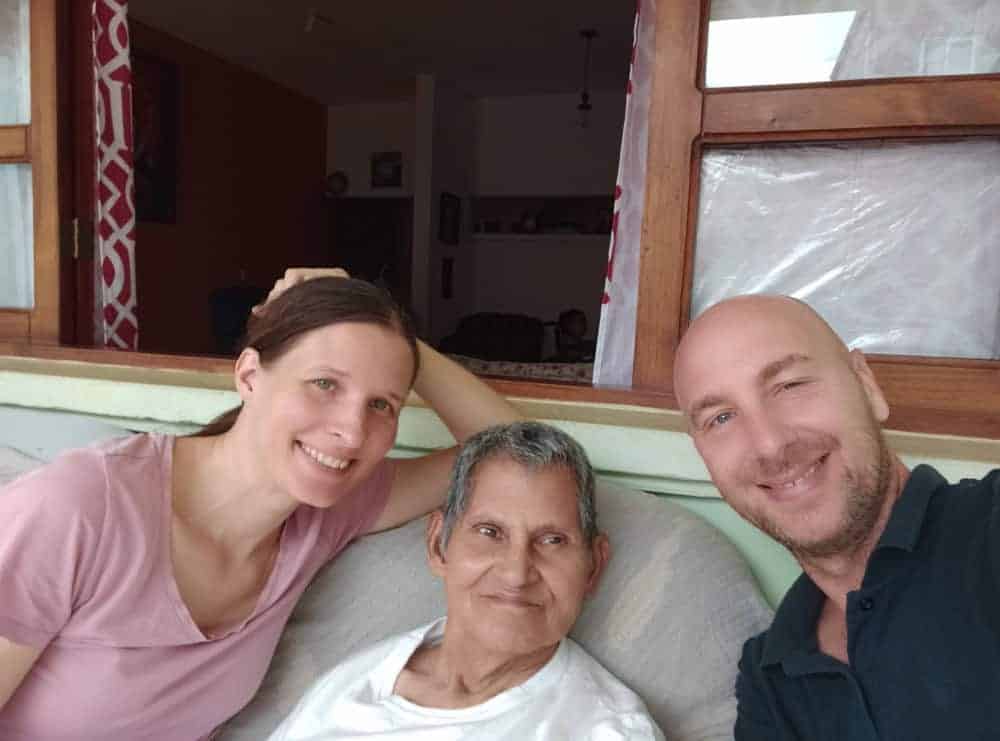Many years ago, a villager was walking along the narrow jungle paths, not far from the Native American community by the Ucayali River. Suddenly, he saw a marvelous stone and realized that he found a diamond. He moved to Satipo, sold the diamond and reveled in his riches.
That’s what the chieftess of a Native American village called El Diamante de Sur told us when we asked where the community’s name came from.
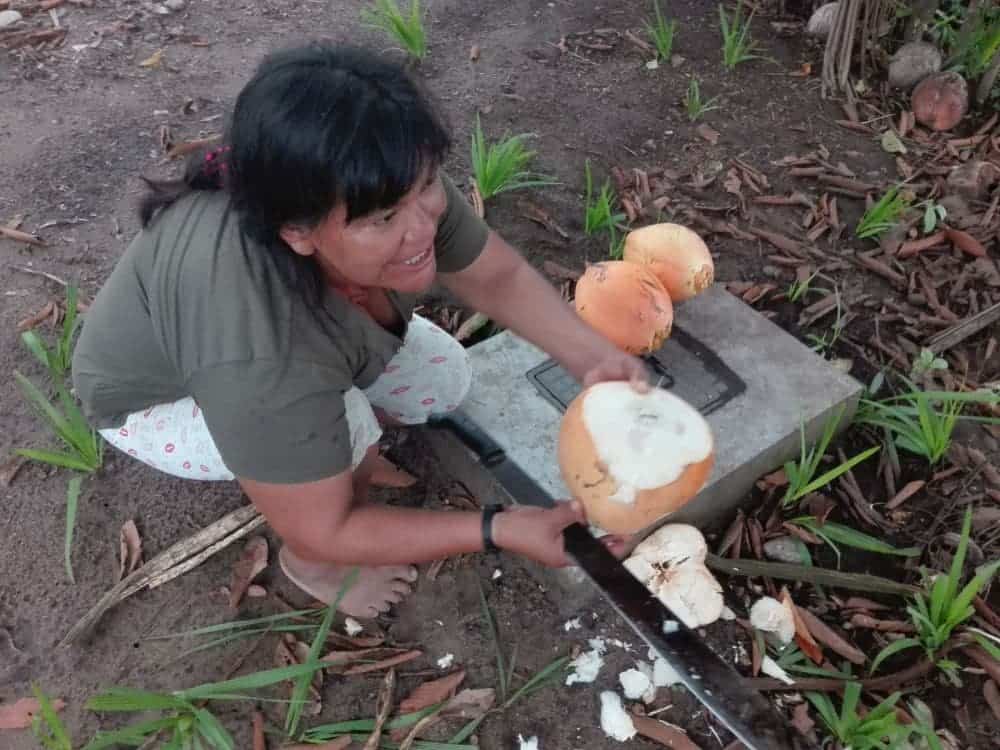
Her version was different than missionary’s. According to Fr. Enrique, the village got its name due to the intense blue morning sky over the village, that shines as blue as a diamond. Hence its name.
We didn’t mind either way. Maybe both stories were true. What mattered the most was that after a 3-hour boat ride, we finally arrived to the village’s shore – to the exact same spot where hundreds of years ago, first Europeans came in contact with a different people with different culture, values and tradition.
This Won’t Be Possible Without Extra Gear!
Before setting out into the wilderness to meet the Native Americans of the Amazon rainforest, we needed some new equipment.
We each bought a pair of tall plastic boots in Atalaya. Partly because terrain there is muddy and wet, but mostly because of snakes.
Missionaries said that it’s most dangerous at night. That’s when snakes can enter the village. It’s hard to spot them because there’s no electric lighting. Without boots to protect you from snake bites, your life could be at risk.
Next, we bought raincoats. During this period, it rains almost every day and several times a day. Showers of rain are sudden and abundant, but they don’t last long. A couple of hooded capes will keep us dry, especially during the boat ride.
We bought strong sunscreen and protection against insects: mosquito spray and light, but durable long-sleeved pants and shirts. There’s dengue and malaria where we’re going.
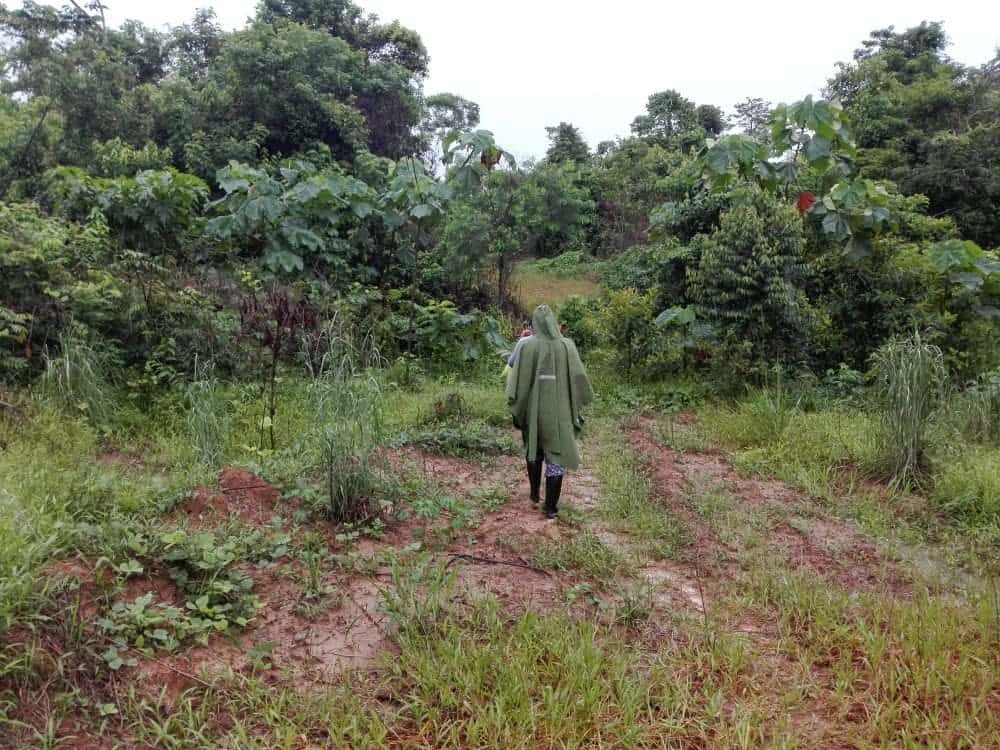
Fortunately, we didn’t have to buy a tent, because the mission in Atalaya had one still available. Missionary Enrique took his tent, and we took ours.
On the River Towards the First Community
We headed out early in the morning, after breakfast. As I mentioned in my previous posts, Atalaya lies by the Tomba River. From the small, humid and untidy harbor, the river leads to the heart of Amazon where there are many Native American villages and communities.
Nora, the chieftess of El Diamante community came to Atalaya for a few days. There, she usually purchases provisions and transports them to her village by boat. This time she was accompanied by her mother and her niece.
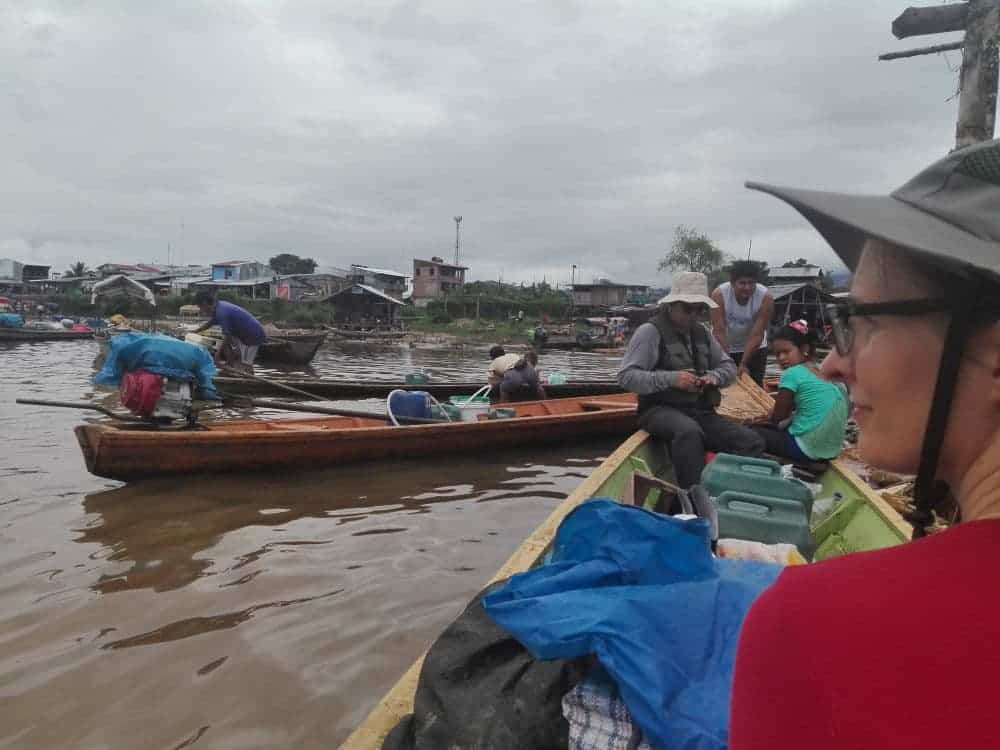
The five of us embarked Nora’s narrow oblong boat. First, we loaded our backpacks and tents, followed by provisions, sweets and Christmas gifts for native children, gifted by various European companies.
Christmas will come early for those children, because missionaries can’t visit every community in the Amazon during Christmas time. Keep in mind that it takes more than 10 hours of boat ride to reach some of those communities. Add another 10 hours of walking, and you’re there.
Beauty of the Amazon Rainforest
And we’re off. 3-hour boat ride along the peaceful brown river, surrounded by tropical greenery and lush trees was simply amazing. Words can’t describe the peace we felt in this magnificent natural environment.

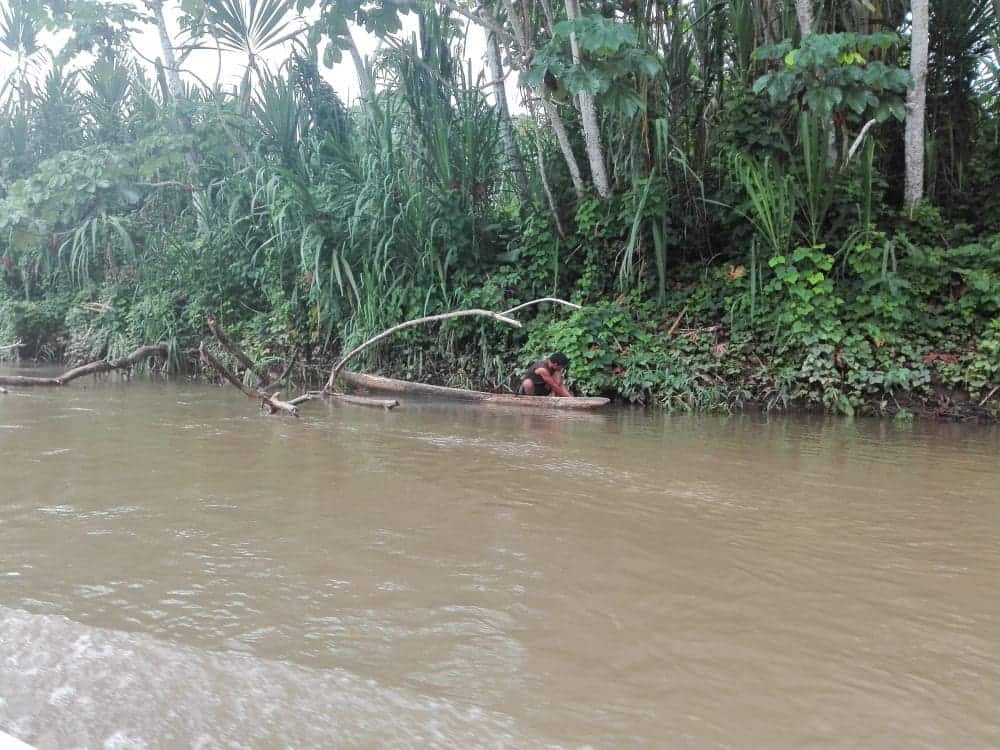
We
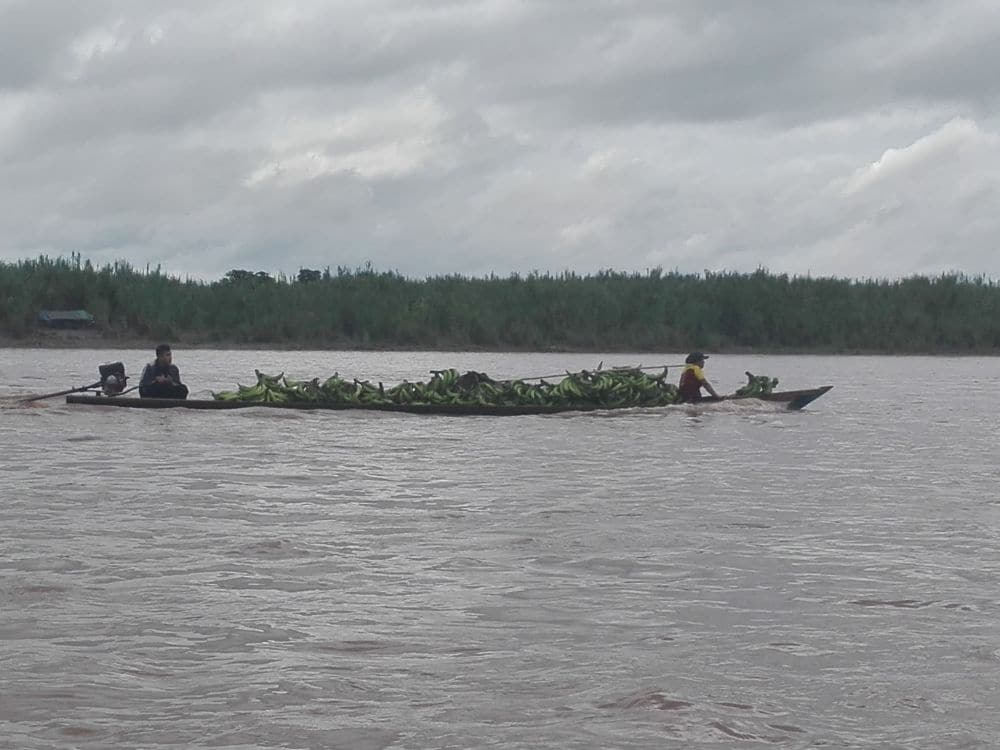
We were overwhelmed by the grace of that moment, the depth of nature, and the beauty of creation. All we could do was look at the sky and thank God. Who else could create something so perfect?
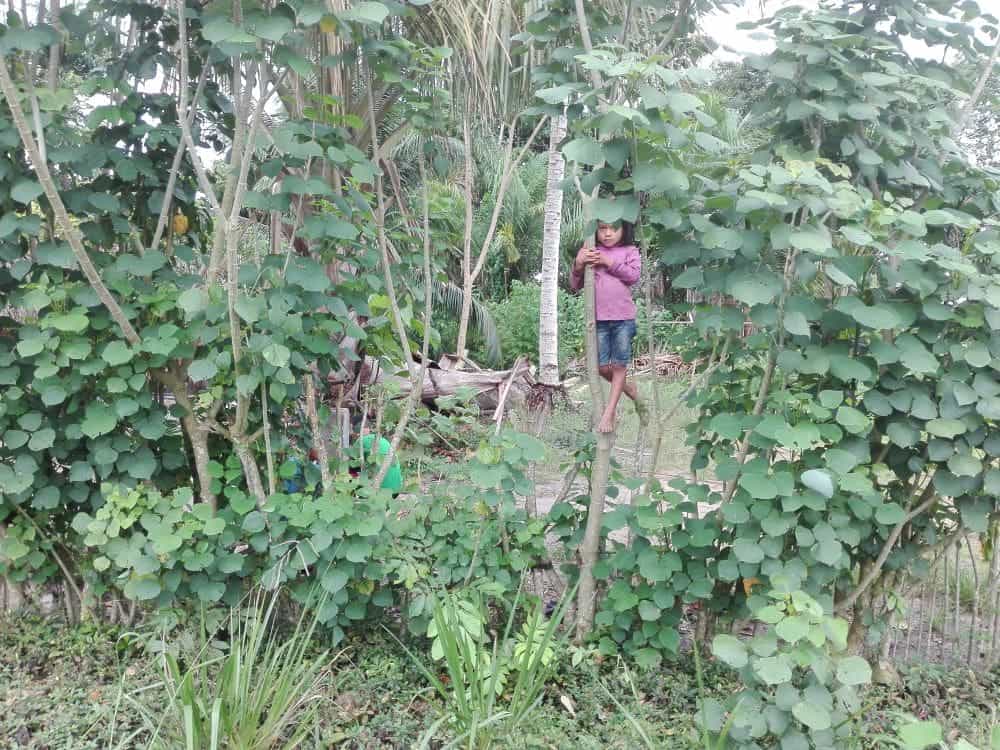
There was nothing that could disrupt the Amazonian idyll – not occasional showers, nor water that needed to be constantly drained from the boat with a plastic container, which is an essential piece of equipment when riding on such a boat.
Diamond
El Diamante is one of the more organized communities in the wilderness. Since it’s relatively close to Atalaya, natives can travel to the city more often and missionaries can visit the natives more often.
Due to city’s proximity, they are also more used to newcomers than the more remote villages.
El Diamante is a 28-year-old community. 28 years ago, Peru began to systematically regulate the Amazonian villages and form them into organized units. The community consists of 27 closely tied families; many of them are related to each other.
Like all other Native American communities, El Diamante also has a chieftain, a community council and democratic decision-making system when it comes to important issues. Much like the indigenous Guarani whom we visited in Cascavel in Brazil.

The village is a home to two great indigenous peoples: Ashaninka and Asheninka who, in addition to Spanish, speak their own language called Asheninka. Due to the proximity of Atalaya, the community also has some Mestizos – people with European and Native American background, usually married into family.
Fist Missionary Post
After disembarking, we had to ascend through the forest before reaching the village.
There, we saw a broad grassy surface (football field, that’s the center of the community), surrounded by wooden houses continued into the rainforest.
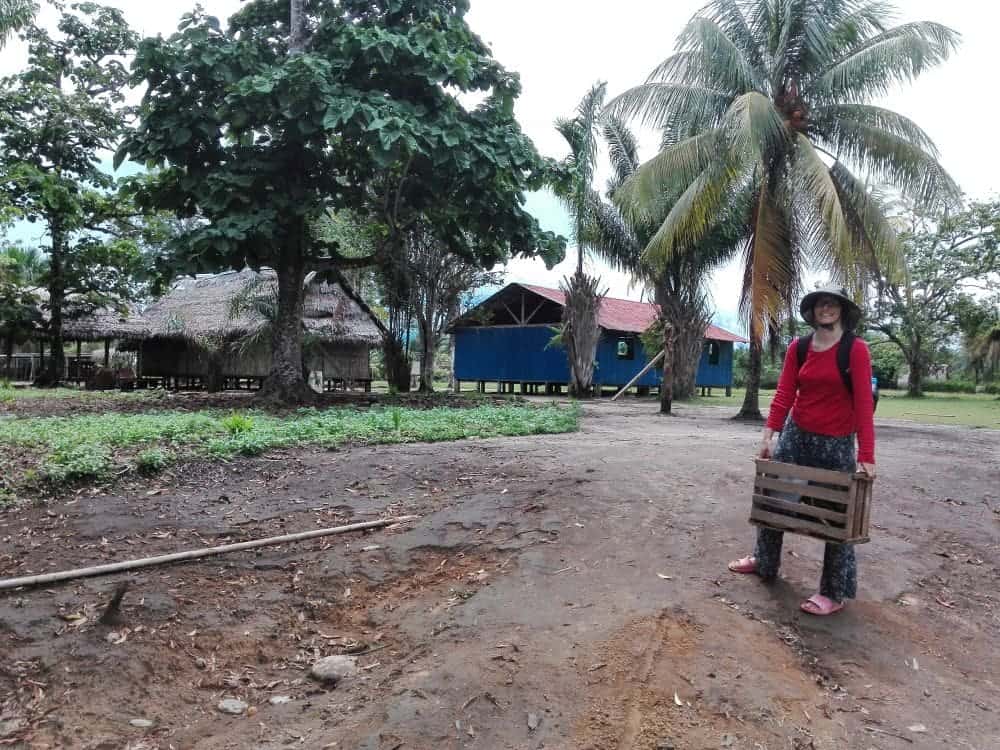
Missionaries often use football to strengthen the relationship with villagers.
“
Among the wooden huts, Claretian missionaries have their own wooden post. When they arrive in the village, they usually stay there overnight or longer.

That’s when they say Mass, baptize the children, meet the villagers and help the ones in need.
Living in the Native American Community
Each community visited by Claretian missionaries has their own so-called animator.
That’s the person who’s responsible for catechesis of the children and connecting the community’s Catholics. The animator also serves as a link between the missionary and the village and plays an important role in the spiritual care of the community.
Residents of villages, such as El Diamante, are often Christians, but that’s not the rule. Many of them have their own beliefs that are passed from generation to generation. Almost every village has its own shaman who is by far the most important member of the community and has a significantly greater influence than, for example, a priest or a missionary – even among the Catholic natives.
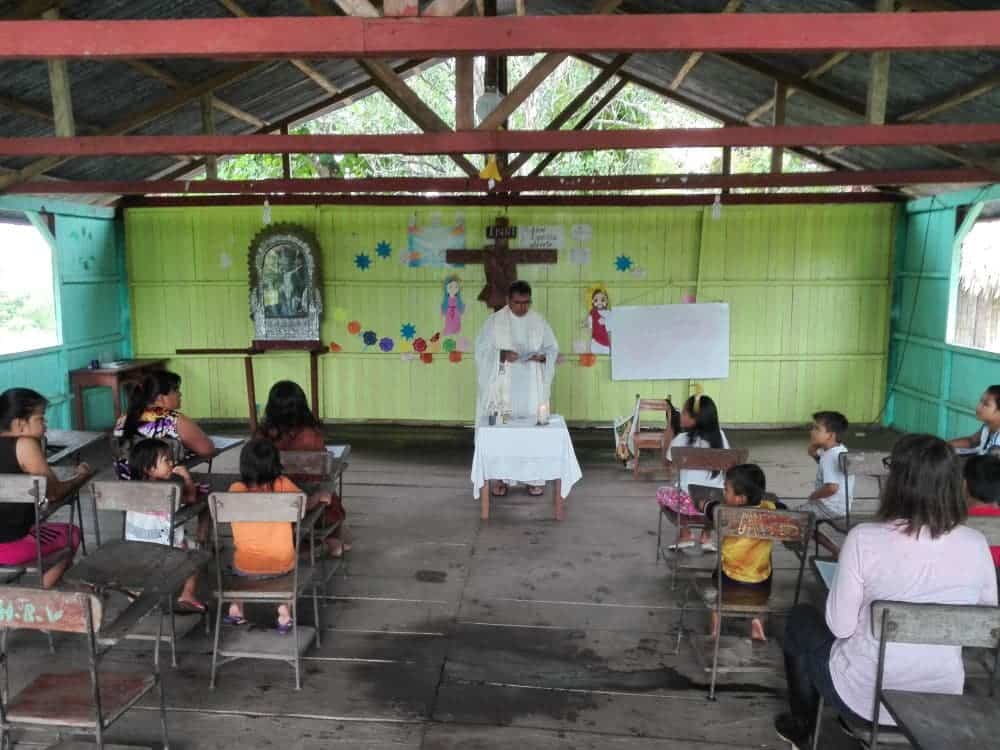
El Diamante has its own church, but it’s different than what we’re used to. It is a simple wooden structure in which religious education takes place and where Mass is celebrated when there’s a missionary in the community.
Education Among Native Americans
The village also has a primary school. It is a simple structure a well, but extremely important for the children there.
From Monday through Friday, two teachers from Atalaya come to the village so that children can learn writing, reading, mathematics and other subjects.
Teachers in villages are a project of the Peruvian government, not the missionaries. This is one of the very few things that the state provides to the natives.
Another thing the state provides is columns with solar panels that provide a natural source of electricity.
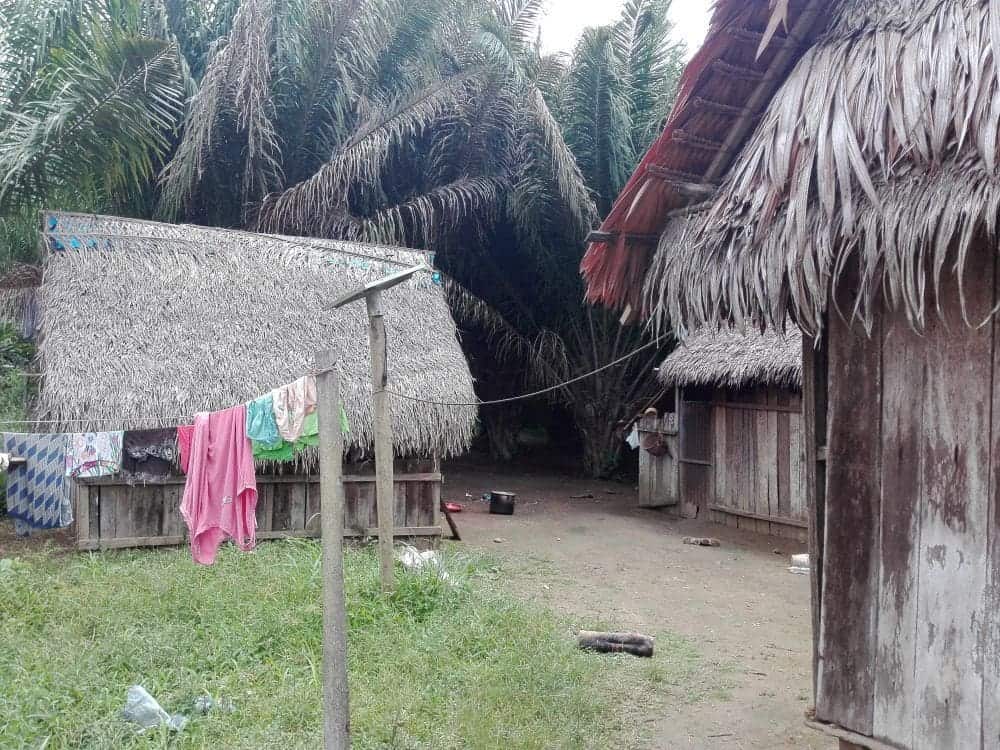
But that’s pretty much everything. Medicine is number one priority for the natives, but it’s not subsidized by the state, so they must purchase it themselves. They often have no money for this. The goal of our charity campaign is to raise enough money so that missionaries can purchase enough basic medicine to supply the communities that they already provide with spiritual care.
The Food Is Simple
We ate at Nora’s house. The meal was what people here usually eat: fish, rice, cassava and cooked or roasted bananas. Every day, three times a day, prepared in many different ways.

There’s plenty of fruit! Coconut trees, bananas, pineapples, mangoes and a lot of other fruits that we do not know. I don’t think I have to point out how delicious they are – they’re sweet and natural, and there’s no chemistry involved.
There’s nothing better than being offered coconut water or a branch full of bananas from their banana tree.
Waterfall Supplying the Community
On the first day after lunch, we took advantage of a relatively good weather and walked to the waterfall together with Nora’s daughter and nephew.

We walked for an hour and a half. Majority of the path was well-kept, but some sections required us to wade through mud and water.
Along the way, we met people who sat in front of their huts, exchanged a few words with them, and handed out candy to children. The path to the waterfall led us through two Amazonian villages. In the end, the exhausting hike finally paid off.
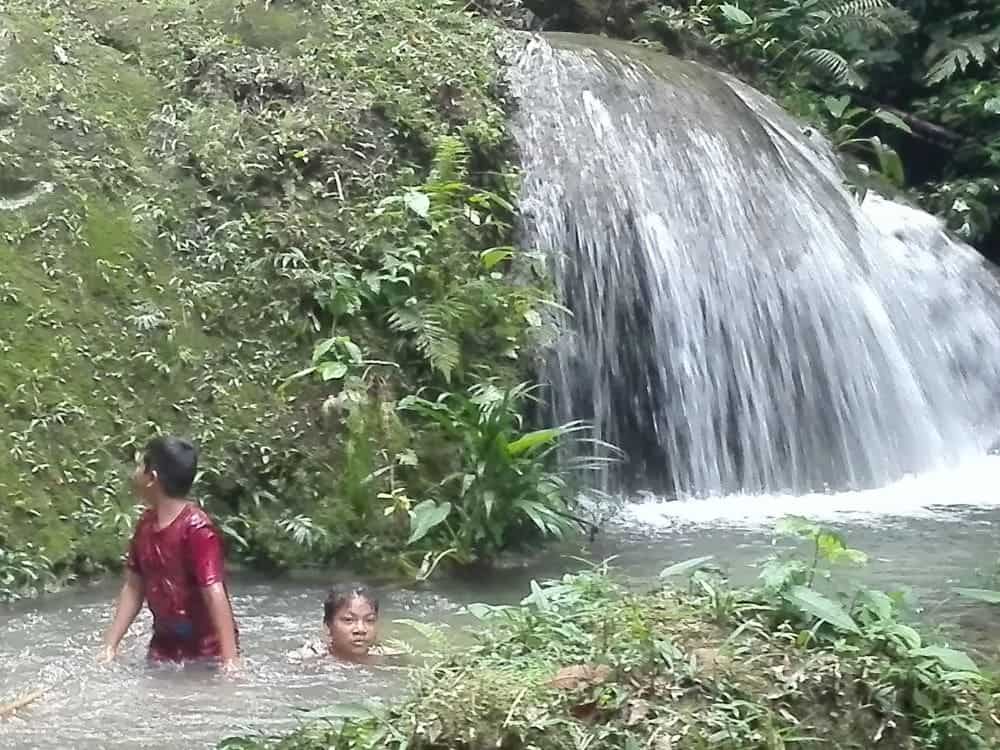
Water that flows from the higher part of the forest is extremely clean. This waterfall supplies water to El Diamante and other villages and is therefore extremely important to this area.
We returned tired and looked forward to sleeping under the mission’s roof. It didn’t go according to plan.
Celebration in the Wilderness
It was neighbors’ daughter’s 4th birthday. But her birthday was just an excuse for a lively party that lasted all evening, all night and the entire following day.
“This is how you celebrate out here. The party ends when masato runs out,” said Enrique. Masato is a simple beverage made from cassava. It can be non-alcoholic, but is usually allowed to ferment to become alcoholic.
I Wish They Ran out of Power
Music from the speaker echoed relentlessly throughout the village.
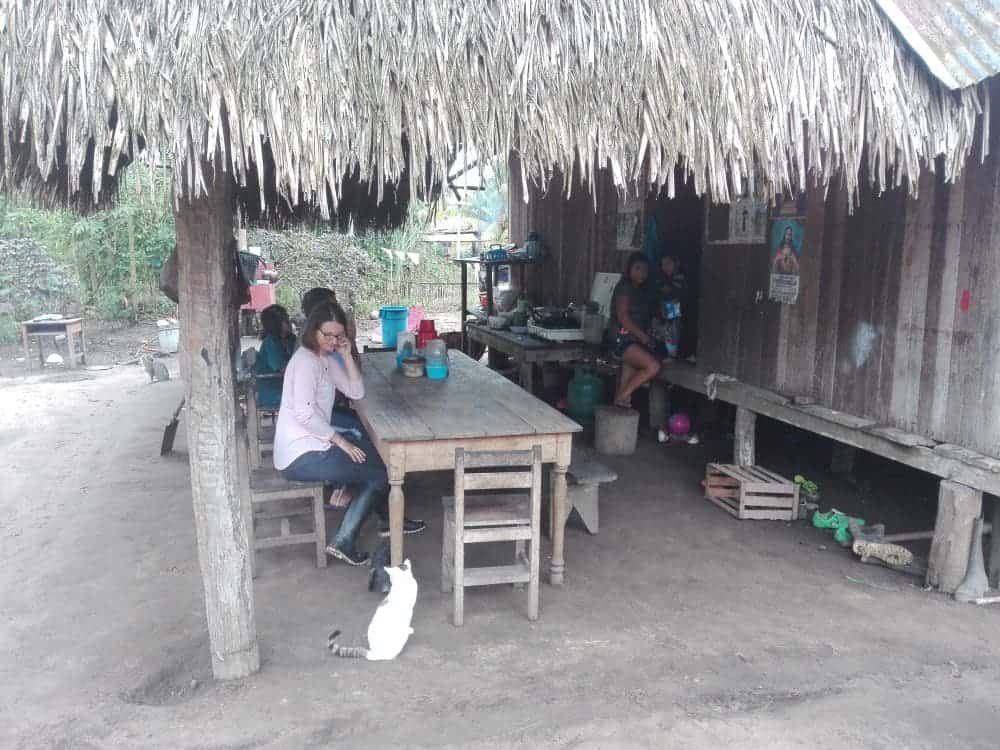
In our tent, we prayed to fall asleep as soon as possible. But I guess God wanted us to familiarize ourselves with so-called Musica de la Selva (music of the wilderness). The genre is lovely and fun, but five hours of it is plenty. Or are Europeans just that boring?
“I hope they at least run of power, if not drinks,” I said to Silva.
After one hour, the music stopped. I was relieved. We heard the engine at the neighbor’s house.
“That’s it,” I thought. “They’re starting to go home.” At least that’s what I thought, because some guys in the village have bikes.
As we were falling asleep, the music started to play again.
The sound we heard wasn’t bikes leaving the party. Quite the opposite. They ran out of power so they brought a generator.
Rain Messed with Our Plans
The plan was to stay in El Diamante for only one night, and then move on to Nuevo Progresso (New Progress) community, which is another hour away from El Diamante. But the rain ruined our plans.

The rain poured so hard the river rose and currents strengthened, so the way forward was not safe. We had an arrangement with the primary school’s principal to take us from El Diamante by boat, but he didn’t show up, as we expected.
No problem. We were having fun in the company of native children who didn’t really mind the rain.

The harder it rained, the livelier they were. Despite football field being completely soaked, children were running around, wrestling, laughing, and playing football – completely free and without worries. What a life!
Onwards
After two days in El Diamante, water levels finally dropped enough for us to continue our journey. The teacher didn’t show up, so we asked one of the villagers to take us to Nuevo Progresso, which is a poorer and more modest community, but pleasant and friendly nevertheless.
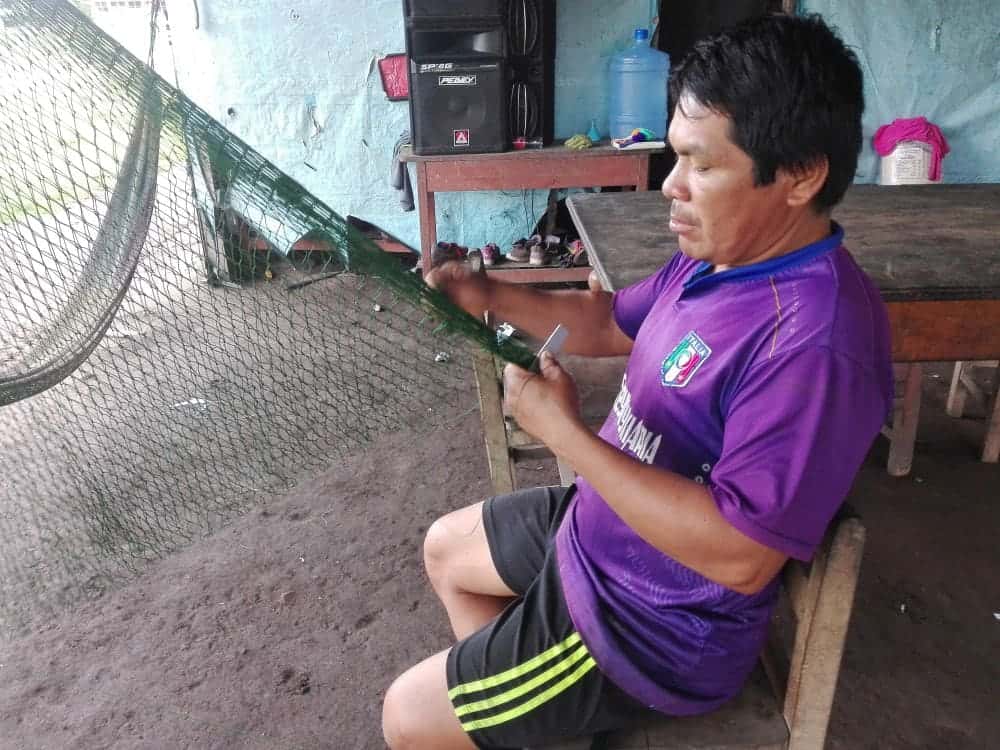
More about this in the next article.
Operando – God is working right now!
